The New Jersey Portal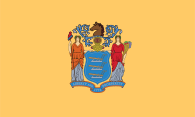 New Jersey is a state situated within both the Mid-Atlantic and Northeastern regions of the United States. It is the most densely populated of all 50 U.S. states, and is situated at the center of the Northeast megalopolis. New Jersey is bordered on its north and east by New York state; on its east, southeast, and south by the Atlantic Ocean; on its west by the Delaware River and Pennsylvania; and on its southwest by Delaware Bay and Delaware. At 7,354 square miles (19,050 km2), New Jersey is the fifth-smallest state in land area, but with close to 9.3 million residents as of the 2020 United States census, its highest decennial count ever, it ranks 11th in population. The state capital is Trenton, and the state's most populous city is Newark. New Jersey is the only U.S. state in which every county is deemed urban by the U.S. Census Bureau with 13 counties included in the New York metropolitan area, seven counties in the Philadelphia metropolitan area, and Warren County, part of the heavily industrialized Lehigh Valley metropolitan area. New Jersey was first inhabited by Paleo-Indians as early as 13,000 B.C.E., with the Lenape being the dominant Indigenous group when Europeans arrived in the early 17th century. Dutch and Swedish colonists founded the first European settlements in the state, with the British later seizing control of the region and establishing the Province of New Jersey, named after the largest of the Channel Islands. The colony's fertile lands and relative religious tolerance drew a large and diverse population. New Jersey was among the Thirteen Colonies that supported the American Revolution, hosting several pivotal battles and military commands in the American Revolutionary War. On December 18, 1787, New Jersey became the third state to ratify the United States Constitution, which granted it admission to the Union, and it was the first state to ratify the U.S. Bill of Rights on November 20, 1789. (Full article...) Selected article -
U.S. Route 1/9 (US 1/9) is the 31.01-mile (49.91 km) long concurrency of US 1 and US 9 from their junction in Woodbridge Township, Middlesex County, New Jersey north to New York City. The route is a multilane road, with some freeway portions, that runs through urbanized areas of northern New Jersey adjacent to New York City. Throughout most of its length in New Jersey, the road runs near the New Jersey Turnpike/Interstate 95 (I-95). In Fort Lee, US 1/9 merges onto I-95 and crosses the Hudson River on the George Washington Bridge, where the two U.S. routes split a short distance into New York. US 1/9 intersects several major roads, including I-278 in Linden, Route 81 in Elizabeth, I-78 and US 22 in Newark, Route 139 in Jersey City, Route 3 and Route 495 in North Bergen, and US 46 in Palisades Park. Between Newark and Jersey City, US 1/9 runs along the Pulaski Skyway. Trucks are banned from this section of road and must use US 1/9 Truck. The concurrency between US 1 and US 9 is commonly referred to as "1 and 9". Some signage for the concurrency, as well as the truck route, combines the two roads into one shield, separated by a hyphen (1-9) or an ampersand (1&9).
The current alignment of US 1/9 south of Elizabeth was planned as pre-1927 Route 1 in 1916; this road was extended to the Holland Tunnel in Jersey City in 1922. When the U.S. Highway System was created in 1926, US 1 and US 9 were marked concurrent through northern New Jersey between Rahway on the current alignments of Route 27 and US 1/9 Truck. In 1927, pre-1927 Route 1 became Route 25, and Route 1 and Route 6 were legislated along the current US 1/9 north of Jersey City. US 1/9 originally went to the Holland Tunnel on Route 25; after the George Washington Bridge opened the two routes were realigned to their current routing north of Jersey City. After the Pulaski Skyway opened in 1932, US 1/9 and Route 25 were routed to use this road, which soon had a truck ban resulting in the creation of Route 25T (now US 1/9 Truck). South of Newark, US 1/9 was moved from Route 27 to Route 25. In 1953, the state highways running concurrent with US 1/9 in New Jersey were removed. In 1964, the approaches to the George Washington Bridge were upgraded into I-95. Selected picture - Credit: Wasted Time R The Delaware Memorial Bridge is a set of twin suspension bridges crossing the Delaware River. The toll bridges carry Interstate 295 and U.S. Route 40 between Delaware and New Jersey. New Jersey news'Related portalsSelected biography -Philip Dunton Murphy (born August 16, 1957) is an American politician, diplomat, and financier serving as the 56th governor of New Jersey. A member of the Democratic Party, he was elected governor in 2017 and narrowly reelected in 2021. From 2009 to 2013, Murphy served as the U.S. ambassador to Germany under President Barack Obama. Murphy had a 23-year career at Goldman Sachs, where he held several high-level positions and accumulated considerable wealth before retiring in 2006. He is involved in many civic organizations and philanthropic pursuits. He served as finance chairman for the Democratic National Committee in the mid-late 2000s under Howard Dean. During his ambassadorial tenure, Murphy dealt with international fallout from the United States diplomatic cables leak. (Full article...)Did you know? -
General imagesThe following are images from various New Jersey-related articles on Wikipedia.
TopicsQuality content
CategoriesThings you can do
For more information on how you can help, see the WikiProject New Jersey. Associated WikimediaThe following Wikimedia Foundation sister projects provide more on this subject:
Discover Wikipedia using portals |
How Can We Help?


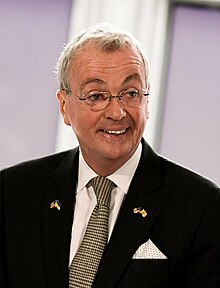






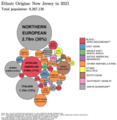


















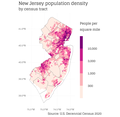








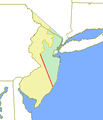















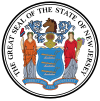
























Recent Comments